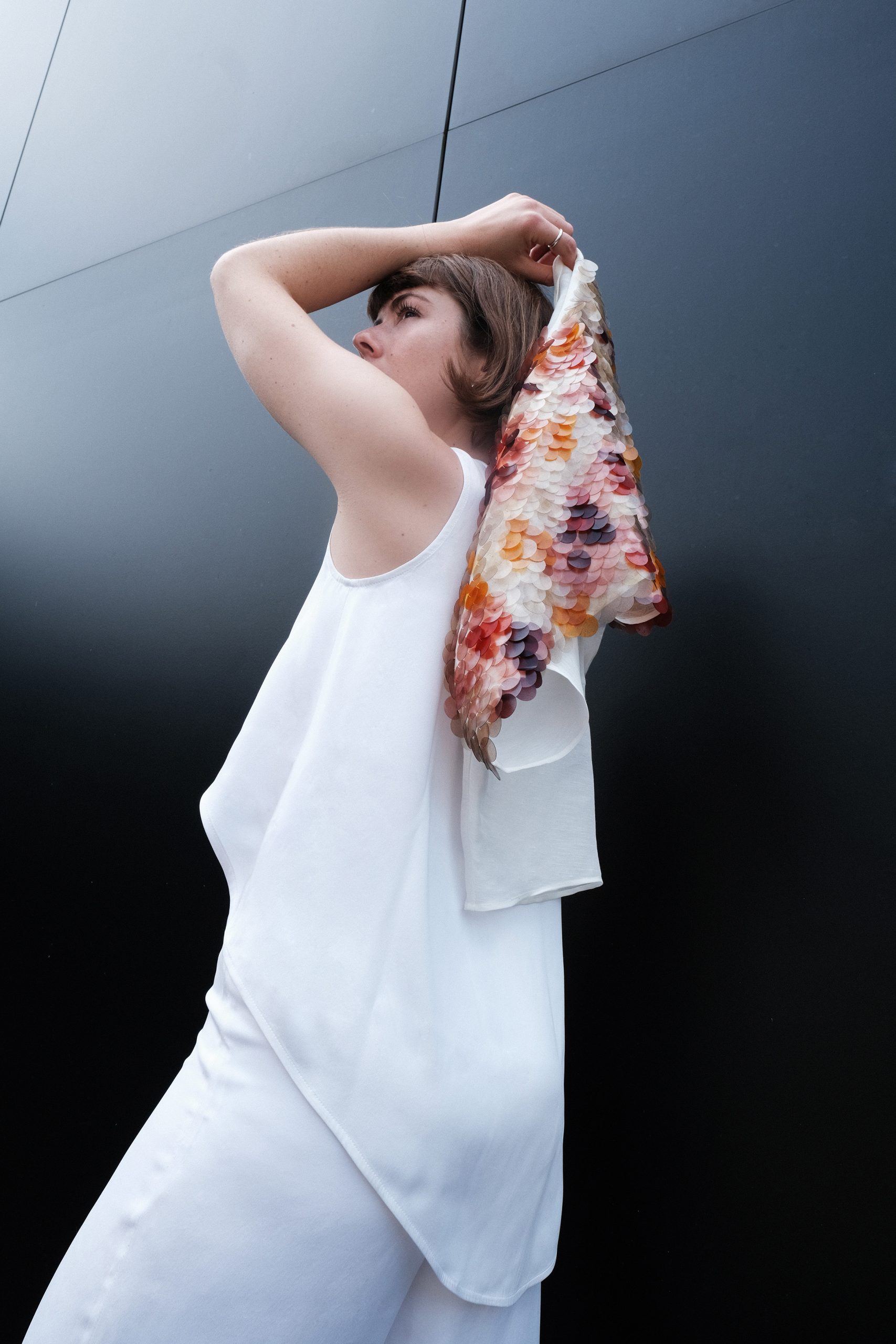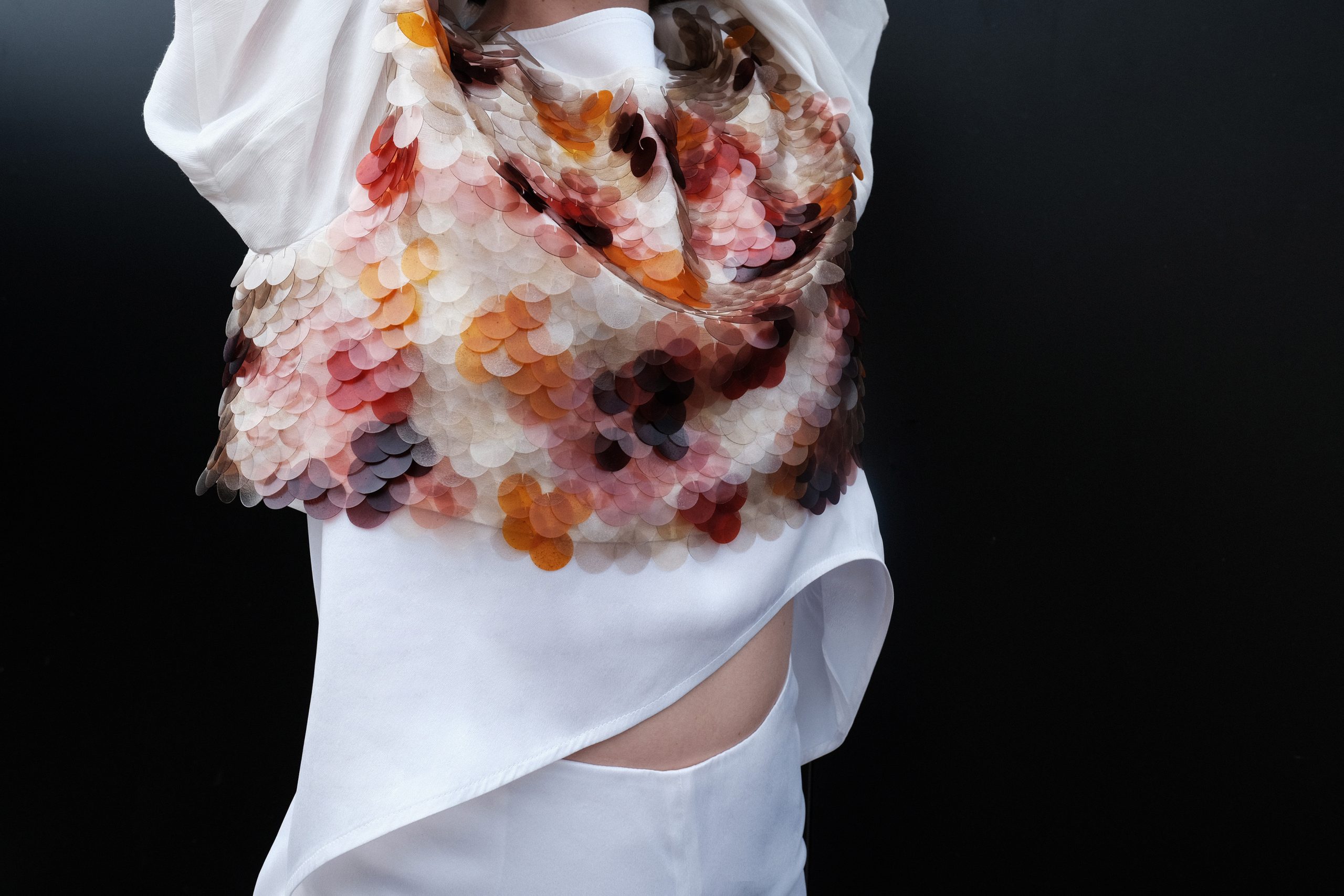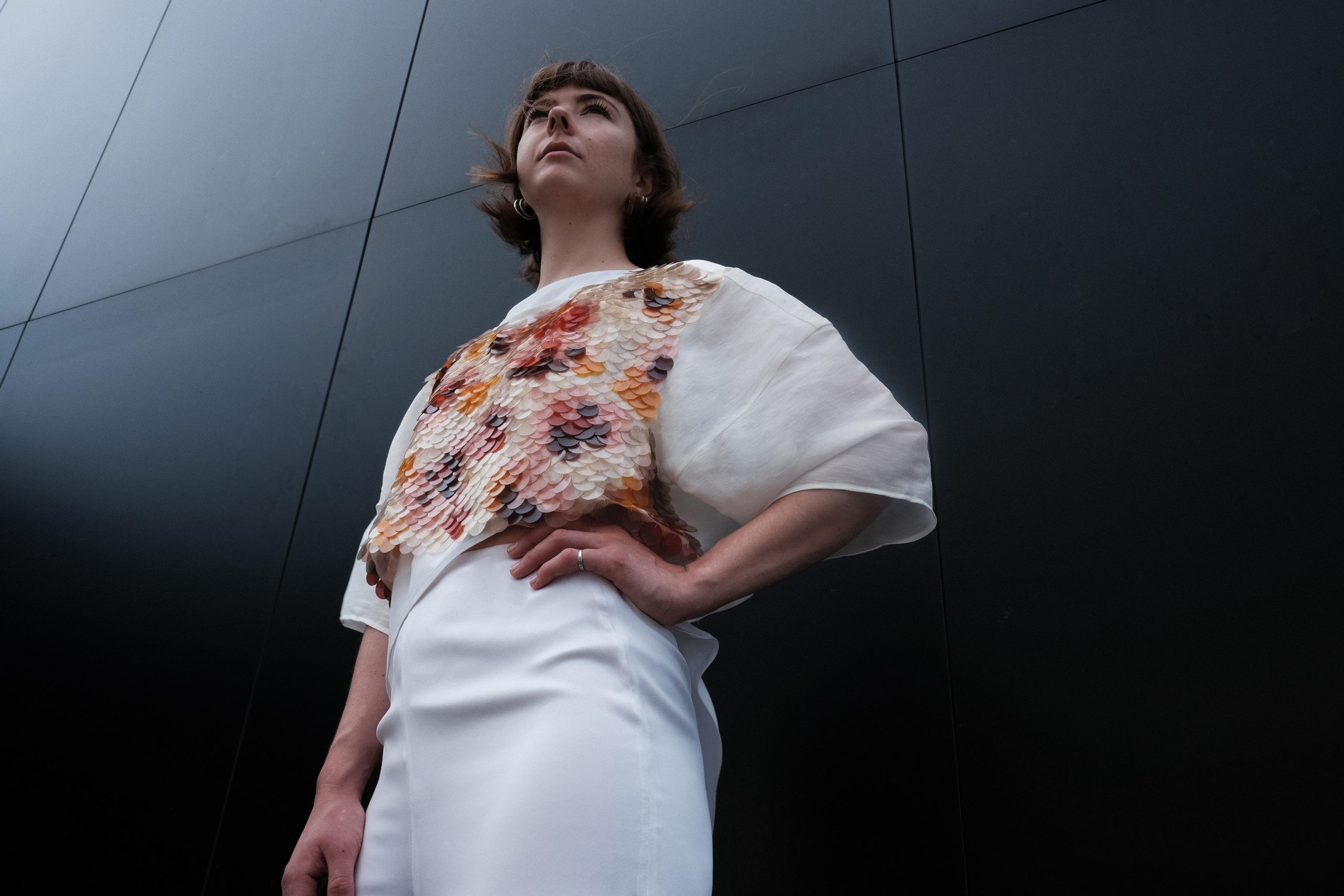Circular Oceans

Useful information
- Team members
- Sarah Maria Schmidt Carolyn Raff
- Country
- Germany
- Keywords
- Inspired by Cradle to Cradle natural fibres biodegradability material innovation circular design healthy oceans
Short Description
Circular Oceans explores circular design strategies promoting natural materials and ocean health.
Detailed Description
The fashion project applies circular design strategies within an adaptable outfit. It translates the necessity for circular and healthy design by highlighting a material coming from the sea: Algae-based sequins telling the story of the oceans. The outfit is made up of 2 layers and a total of 3 garments – the base layer is made for longevity in a timeless design and high quality manufacture. After the first use cycle we foresee a re-dye and repair service with natural dyes to update the pieces and enable a second use phase. After the garments are no longer desirable they become resources for new fibres through recycling. The second layer is biodegradable. Bio-based and biodegradable sequins made from algae are applied onto a linen-silk blend. The base outfit can be easily dressed up using this second layer, adapting to the users needs. We offer a re-embellishment service to repair and react to changing colour trends. At the end of use it can safely return to nature and become new soil.
Project Details
- Does your design take social and cultural challenges and human wellbeing into consideration?
With our solution and connected services we inspire new ways of consumption, without compromising on design quality and the aesthetic value of fashion products. With the adaptable outfit the user can dress up or dress down and adapt the garments to their individual needs and benefit from a rich and appealing fashion embellishment. This can be updated to the desired colour and embellishment technique through a re-embellishment service. Our updating and re-dye services tackle the need for constant wardrobe changes and foster longevity and emotional attachment of the garments.
Inspired by Cradle to Cradle methodology the project carefully considers the material health of all components used. By working with non-toxic, but healthy materials that are compatible with the biosphere, we ensure human and animal wellbeing. Synthetic microfibers from garments are already found almost everywhere on the planet and are not only threatening the health of our oceans, the life and wellbeing of animals through the food chain, but also ours as humans. Our solution prevents synthetic microfiber shedding by using only natural fibres, and innovative bio-based and biodegradable algae-based sequins, re-defining the diversity and beauty of natural materials. Using natural dyes prevents toxic chemicals being released into the waterways through the dyeing process of fashion products and contributes to the oceans health. On top of this, by choosing healthy material ingredients we ensure the physical wellbeing of the user and ensure that no harmful chemicals will touch their skin and transfer into the body. The knowledge of a healthy system and fair production behind the products also contribute to the users mental and psychological wellbeing.
- Does your design support sustainable production, embodying circular or regenerative design practices?
Our design supports sustainable production, by choosing responsible material sources and a local, made-on-demand production and high quality manufacture. The base layers, the pants and top, use a sustainably sourced 100% high quality undyed and unbleached silk fabric and biodegradable trims. After a prolonged use phase through our repair and re-dye service, we offer a return service. All biodegradable trims, such as zippers, will be removed and the silk fabrics can be recycled through mechanical silk recycling or, in the future, regeneration technology for new silk fibres. As a natural and animal fibre we aim to keep the fibres at the highest quality value and as pure as possible to not interfere with their recyclability. The fibres become a resource of tomorrow's products.
The embellished layer is made of low-impact linen-silk blended fabric and is fully biodegradable. The bio-based and biodegradable sequins have the shortest life-cycle and can be easily removed and updated through our re-embellishment service. They can safely return to the biosphere as healthy soil separately or as the whole garment, due to the light, translucent structure of the fabric, if it is no longer desired.
- Does your design use principles of distribution and open source?
Our design takes design for adaptability and human needs into consideration. Offering a return service for either re-dye, re-embellish, repair or full return, our proposed solution considers new circular service models and new ways of distribution. For this service we aim to use existing return shipping provider RePack. If a garment is still usable, but not desired anymore by the user and returned to us as full return, we consider a re-commerce strategy to prolong the use phase of the garments to the maximum.
All material ingredients need to be known and available open source for the user to understand the system and offered services and for recyclers to enable the correct recycling stream and high value recycling. The necessary information is available through a QR code inside the garments.
- Does your design promote awareness of responsible design and consumption?
Our solution highlights the need to design garments fit for the circular economy inspired by Cradle to Cradle. Considering these during the design phase also opens up new services models and revenue streams. As designers we take responsibility for the material resources we use and where and how they end up at the end of use.
Implementing the proposed services helps to intercept products ending up as waste in our oceans and intercepts synthetic microfiber shedd and harmful dyes polluting water streams and endangering aquatic life. Using the innovative algae-base sequins facilitates to translate the rather technical recycling story of garments and makes it more relatable and tangible to the user.
Our design does not only consider the design of the garments themselves, but creates a whole beneficial system with circular service models around it to foster new ways of consuming fashion.
Images



Project Website
Social Media Accounts
@vontaubenundspatzen
@an_ocean_full_of_opportunities